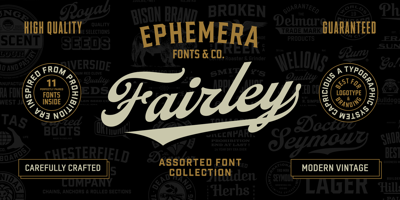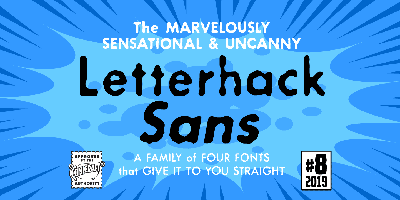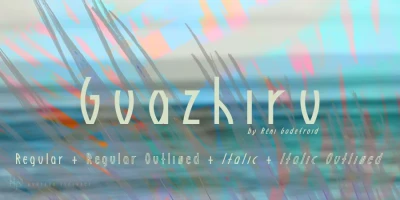Typography Trends That Will Dominate 2025
Typography Trends That Will Dominate 2025
As we move deeper into 2025, typography continues to evolve at an unprecedented pace, driven by technological advances, cultural shifts, and changing user behaviors. This year promises to bring revolutionary changes in how we approach type design, with trends that blend digital innovation with timeless design principles. Understanding these emerging typography trends will help designers, marketers, and brand strategists create more engaging and effective visual communications.
Variable Fonts: The Future of Flexible Typography
Variable fonts are revolutionizing the typography landscape in 2025, offering unprecedented flexibility and control over font characteristics. Unlike traditional fonts that require separate files for different weights and styles, variable fonts contain multiple variations within a single file. This technology allows designers to adjust weight, width, slant, and optical size smoothly along continuous axes.
The practical benefits extend beyond creative flexibility. Variable fonts significantly reduce file sizes for web applications, improving loading speeds and user experience. Major brands are adopting variable fonts to maintain consistency across different platforms while optimizing performance. Google Fonts has expanded its variable font collection, making these advanced typefaces accessible through free font resources.
Variable fonts also enable responsive typography that adapts automatically to different screen sizes and reading conditions. Text can become bolder on smaller screens for better readability or lighter on high-resolution displays for elegant appearance. This adaptive quality makes variable fonts essential for modern web design and mobile-first approaches.
AI-Generated Typography: Machine Learning Meets Design
Artificial intelligence is transforming typography creation in 2025, with AI-powered tools generating custom fonts and optimizing existing typefaces. Machine learning algorithms analyze vast databases of typography to create new font families that balance aesthetic appeal with functional requirements. These AI-generated fonts often exhibit unique characteristics that human designers might not naturally explore.
Several platforms now offer AI typography generation services, allowing users to input brand attributes and receive customized font recommendations. These tools consider factors like industry, target audience, and brand personality to suggest appropriate typefaces. While purists may question AI's role in creative design, the technology democratizes typography by making custom fonts accessible to small businesses and independent designers.
AI also enhances font optimization for different languages and writing systems. Machine learning can adapt Western fonts for non-Latin scripts while maintaining brand consistency, crucial for global companies expanding into new markets.
Brutalist Typography: Bold and Unapologetic Design
Brutalist typography emerges as a dominant trend in 2025, characterized by raw, unrefined aesthetics that challenge conventional design rules. This movement embraces imperfection, featuring fonts with irregular spacing, distorted letterforms, and intentionally crude appearances. Brutalist typography reflects a broader cultural shift toward authenticity and rejection of overly polished digital experiences.
Brands targeting younger demographics particularly embrace brutalist fonts to communicate rebellion, creativity, and anti-establishment values. Fashion companies, music labels, and cultural institutions use brutalist typography to stand out in crowded markets and connect with audiences seeking genuine expression.
However, brutalist typography requires careful application to maintain readability and brand professionalism. Successful implementations balance rawness with functionality, using brutalist fonts for headlines while pairing them with cleaner typefaces for body text.
Sustainable Typography: Eco-Conscious Font Design
Environmental consciousness influences typography trends in 2025, with designers creating "eco-fonts" that reduce ink consumption and digital energy usage. These sustainable fonts feature optimized letterforms that use less ink in printing applications and require fewer pixels for digital display. The trend reflects growing awareness of design's environmental impact and corporate responsibility initiatives.
Several free font collections now highlight eco-friendly options, making sustainable typography accessible to environmentally conscious brands. These fonts maintain readability while reducing resource consumption, appealing to companies with sustainability commitments.
Digital sustainability also drives typography optimization for energy efficiency. Fonts designed for OLED screens use darker backgrounds and lighter text to reduce power consumption, extending battery life for mobile devices. This technical consideration becomes increasingly important as mobile usage continues growing globally.
Retro-Futurism: Nostalgia Meets Innovation
The retro-futuristic typography trend combines vintage aesthetics with modern technology, creating fonts that evoke past visions of the future. These typefaces draw inspiration from 1970s and 1980s science fiction, featuring geometric shapes, neon-inspired colors, and metallic effects. The trend appeals to audiences experiencing nostalgia for optimistic future visions while embracing contemporary digital capabilities.
Gaming companies, technology startups, and entertainment brands particularly favor retro-futuristic fonts to create distinctive visual identities. These fonts work exceptionally well in digital environments, where effects like gradients, shadows, and animations can enhance their futuristic appearance.
The trend also reflects broader cultural fascination with retrofuturism in movies, music, and fashion. Typography designers create fonts that capture this aesthetic while ensuring compatibility with modern applications and accessibility requirements.
Kinetic Typography: Motion in Digital Experiences
Moving typography gains prominence in 2025 as digital platforms increasingly support animation and interactive elements. Kinetic typography transforms static text into dynamic experiences that capture attention and convey emotion through movement. This trend particularly impacts social media, where animated text helps content stand out in busy feeds.
Subtle animations like breathing text, morphing letters, and responsive hover effects create engaging user interactions without overwhelming content. Advanced CSS animations and JavaScript libraries make kinetic typography more accessible to web developers, expanding its adoption across various digital platforms.
Motion typography also serves functional purposes, guiding user attention and improving information hierarchy. Animated elements can highlight important calls-to-action or reveal information progressively, enhancing user experience and conversion rates.
Cultural Typography: Celebrating Global Diversity
Typography in 2025 embraces cultural diversity, with designers creating fonts that celebrate different writing systems and cultural traditions. This trend goes beyond simple character support to incorporate cultural aesthetics and calligraphic traditions into modern typeface design. Brands operating in global markets recognize the importance of culturally appropriate typography for authentic local connections.
Many free font resources now offer extensive collections supporting various writing systems, from Arabic and Chinese to indigenous scripts. These fonts help brands communicate respectfully across different cultures while maintaining visual consistency.
Cultural typography also influences Latin-based fonts, incorporating stylistic elements from different traditions to create unique hybrid typefaces. This cross-cultural pollination results in innovative fonts that reflect our interconnected global society.
Accessibility-First Typography: Inclusive Design Principles
Accessibility becomes a primary consideration in typography trends for 2025, with designers prioritizing inclusive design from the outset. This approach creates fonts that work well for users with various visual abilities, reading disorders, and cognitive differences. Accessibility-first typography features improved character recognition, better spacing, and optimized contrast ratios.
The Web Content Accessibility Guidelines (WCAG) increasingly influence font selection and implementation. Designers choose typefaces that meet accessibility standards while maintaining aesthetic appeal. This requirement drives innovation in font design, creating beautiful typefaces that work for everyone.
Dyslexia-friendly fonts gain wider adoption, featuring characteristics that improve readability for users with reading difficulties. These fonts use unique letterforms that reduce character confusion and improve reading flow, benefiting all users regardless of reading ability.
Conclusion: Navigating Typography's Dynamic Future
The typography trends dominating 2025 reflect broader technological and cultural shifts shaping our digital landscape. From AI-generated fonts to sustainable design practices, these trends offer exciting opportunities for creative expression while addressing practical challenges of modern communication.
Successful typography implementation in 2025 requires balancing innovation with functionality, ensuring that trendy fonts serve their primary purpose of clear communication. Designers must consider accessibility, cultural sensitivity, and technical requirements alongside aesthetic preferences.
As typography continues evolving rapidly, staying informed about emerging trends helps designers make better font choices. Whether using cutting-edge variable fonts or thoughtfully selected free font options, the key lies in understanding how typography serves broader design goals and user needs.
The future of typography promises continued innovation, driven by technology advances and changing user expectations. By embracing these trends thoughtfully and responsibly, designers can create more engaging, inclusive, and effective visual communications that resonate with diverse global audiences.




